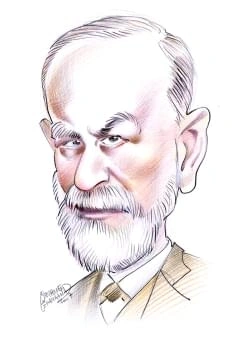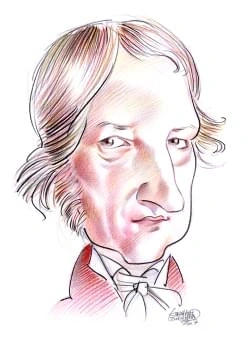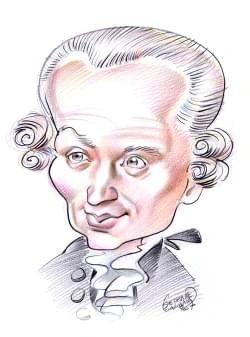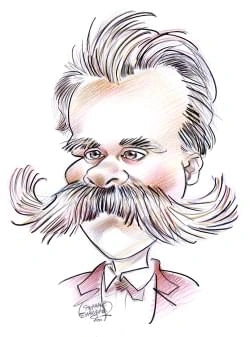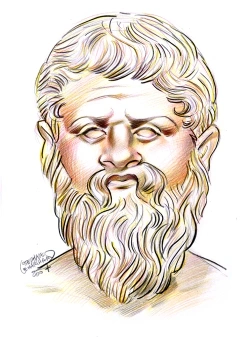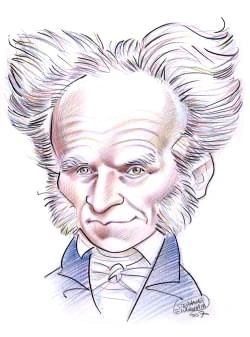697 résultats pour "including"
-
American Literature: Poetry
I
INTRODUCTION
Phyllis McGinley
American poet and author Phyllis McGinley composed light, witty verse, much of which deals with family life.
Taylor, a poet of great technical skill, wrote powerful meditative poems in which he tested himself morally and sought to identify and root out sinful tendencies. In“God's Determinations Touching His Elect” (written 1680?), one of Taylor’s most important works, he celebrates God's power in the triumph of good over evil in thehuman soul. All of Taylor’s poetry and much of Bradstreet’s served generally personal ends, and their audience often consisted of themselves and their family andclosest frie...
-
Cambodia - country.
The population of Cambodia is 14,241,640 (2008 estimate). Population growth per year is estimated at 1.8 percent, one of the highest rates in Asia. The rate of infantmortality is also high. The population density is 81 persons per sq km (209 per sq mi), with the densest concentrations on the heavily cultivated central plain. Themountainous regions of the country, where malaria is widespread, are thinly populated, as are the poorly watered northern provinces. During the late 1970s, under thebruta...
-
Archaeology.
Prehistoric archaeology is practiced by archaeologists known as prehistorians and deals with ancient cultures that did not have writing of any kind. Prehistory, a term coined by 19th-century French scholars, covers past human life from its origins up to the advent of written records. History—that is, the human past documented insome form of writing—began 5000 years ago in parts of southwestern Asia and as recently as the late 19th century AD in central Africa and parts of the Americas. Becaus...
-
Ancient Egypt.
around 4500 BC. The style and decoration of the pottery found at these sites differ from those of pottery found in Upper Egypt. The northern type eventually fell out of use. Other differences between the peoples in Upper Egypt and Lower Egypt include the nature of their architecture and the arrangements for burial of the dead, thelatter perhaps signifying differing religious beliefs. B Unification and Early Dynastic Period By 3500 BC, the settlement of Hierakonpolis, located on the west bank...
-
Ancient Egypt - USA History.
around 4500 BC. The style and decoration of the pottery found at these sites differ from those of pottery found in Upper Egypt. The northern type eventually fell out of use. Other differences between the peoples in Upper Egypt and Lower Egypt include the nature of their architecture and the arrangements for burial of the dead, thelatter perhaps signifying differing religious beliefs. B Unification and Early Dynastic Period By 3500 BC, the settlement of Hierakonpolis, located on the west bank...
-
Psychology.
Clinical psychology is dedicated to the study, diagnosis, and treatment of mental illnesses and other emotional or behavioral disorders. More psychologists work in this field than in any other branch of psychology. In hospitals, community clinics, schools, and in private practice, they use interviews and tests to diagnose depression,anxiety disorders, schizophrenia, and other mental illnesses. People with these psychological disorders often suffer terribly. They experience disturbing symptoms t...
-
Civil Rights and Civil Liberties.
A Religious Freedom Although religious freedom has not generally been curtailed in the United States, Roman Catholics, Jews, and members of such unconventional Protestant groups as theOneida Community and the Church of Jesus Christ of Latter-day Saints have historically been discriminated against and sometimes have even been persecuted,although today overt discrimination has almost vanished. The federal Civil Rights Act of 1964, as well as many state and local laws, prohibits religious discrimi...
-
Democratic Republic of the Congo - country.
Except in the high elevations, the country’s climate is very hot and humid. The average annual temperature in the low central area is about 27°C (about 80°F).Temperatures are considerably higher in February, the hottest month. At altitudes above about 1,500 m (about 5,000 ft) the average annual temperature is about 19°C(about 66°F). Average annual rainfall is about 1,500 mm (about 60 in) in the north and about 1,300 mm (about 50 in) in the south. Frequent heavy rains occur fromApril to November...
-
-
Cell (biology) - biology.
proteins, or other proteins required by the cell. While relatively simple in construction, prokaryotic cells display extremely complex activity. They have a greater range of biochemical reactions than those found in theirlarger relatives, the eukaryotic cells. The extraordinary biochemical diversity of prokaryotic cells is manifested in the wide-ranging lifestyles of the archaebacteria andthe bacteria, whose habitats include polar ice, deserts, and hydrothermal vents—deep regions of the ocean un...
-
New Orleans - geography.
D Metropolitan Region The New Orleans metropolitan region covers 8,800 sq km (3,400 sq mi) and includes the counties—known in Louisiana as parishes— of Orleans, Jefferson, Saint Bernard, Saint Charles, Saint John the Baptist, Saint Tammany, Saint James, and Plaquemines. At the center is the city of New Orleans, which is coextensive withOrleans Parish. It has a land area of 468 sq km (181 sq mi). Extending from this base are numerous suburban towns in the surrounding parishes. Metairie, Harahan...
-
British Columbia - Geography.
hemlock, Douglas fir, Sitka spruce, and various cedars, grows rapidly in the mild, wet climate and produces the largest trees in Canada. In the dry lowlands of thesouthern and central interior, ponderosa and lodgepole pines, aspen, and bunchgrass are characteristic. Spruce dominates the Prince George region. Prairie grasses andstands of aspen are found in the northeastern corner of the province. At elevations higher than about 1,800 m (about 6,000 ft), an alpine vegetation of shrubs, mosses,and...
-
British Columbia - Canadian History.
hemlock, Douglas fir, Sitka spruce, and various cedars, grows rapidly in the mild, wet climate and produces the largest trees in Canada. In the dry lowlands of thesouthern and central interior, ponderosa and lodgepole pines, aspen, and bunchgrass are characteristic. Spruce dominates the Prince George region. Prairie grasses andstands of aspen are found in the northeastern corner of the province. At elevations higher than about 1,800 m (about 6,000 ft), an alpine vegetation of shrubs, mosses,and...
-
Kenya - country.
threatens fish and other water life in the lake by depriving them of oxygen. Kenya is well known for its game parks—including Masai Mara Game Park and Tsavo National Park in the south, and Marsabit National Reserve in the north—whichattract large numbers of tourists and much revenue. Conservation of wildlife within reserves has thus received high priority. About 13 percent (2007) of Kenya’s totalland is protected. There are 229 (2004) threatened species in Kenya. Threatened habitats include the...
-
Renaissance
I
INTRODUCTION
Renaissance, series of literary and cultural movements in the 14th, 15th, and 16th centuries.
the great writings of ancient Greece and Rome. Intellectuals continued to build on the ideas of the Renaissance during the 18th century Age of Enlightenment, a time when scientific advancements led to a newemphasis on the power of human reason. One of the early Enlightenment thinkers was French philosopher and writer Voltaire. He claimed that the Renaissance was acrucial stage in liberating the mind from the superstition and error that he believed characterized Christian society during the Middl...
-
Renaissance .
the great writings of ancient Greece and Rome. Intellectuals continued to build on the ideas of the Renaissance during the 18th century Age of Enlightenment, a time when scientific advancements led to a newemphasis on the power of human reason. One of the early Enlightenment thinkers was French philosopher and writer Voltaire. He claimed that the Renaissance was acrucial stage in liberating the mind from the superstition and error that he believed characterized Christian society during the Middl...
-
Race - biology.
distributed as a cline, generally varying along a north-south line. Skin color is lightest in northern Europeans, especially in those who live around the Baltic Sea, andbecomes gradually darker as one moves toward southern Europe, the Mediterranean, the Middle East, and into northern Africa and northern subtropical Africa. Skin isdarkest in people who live in the tropical regions of Africa. The lack of clear-cut discontinuities makes any racial boundary based on skin color totally arbitrary. Sim...
-
-
Ethnic Groups in Canada - Canadian History.
Ontario and the Atlantic provinces (Nova Scotia, New Brunswick, Newfoundland and Labrador, and Prince Edward Island). Most of the Irish live in rural areas of NovaScotia, New Brunswick, Prince Edward Island, Ontario, and Québec. The Welsh are by far the smallest group among the British Canadians, and they have also settled inthe Atlantic provinces and Ontario. B Culture The language spoken by British Canadians is mostly English, but some Welsh speak their own Celtic language and some Scots, Gae...
-
Estonia - country.
protest the expansion of open-pit phosphorite mining in northeastern Estonia. Their success in stopping the expansion prompted further demonstrations as part of thecountry’s independence movement. Since independence Estonia has taken measures to protect the environment. The government has ratified international agreementsto reduce emissions of hazardous wastes and greenhouse gases, as well as to protect biodiversity, wetlands, and endangered species. Estonians cherish thecountryside, and 31 perc...
-
Seattle - geography.
Mountains. The area includes the suburban cities of Bellevue, Kirkland, Redmond, Renton, and Issaquah. The Eastside has become home to dozens of high-technologyindustries including Microsoft Corporation, ATL Ultrasound, Nintendo of America, divisions of The Boeing Company, and many other firms. In the 1960s commutersheaded to Seattle jobs from homes on the Eastside. Today, the “reverse commute” from Seattle homes to jobs on the Eastside is just as heavy, and both streams oftraffic cross the same...
-
Native American Art.
folding, braiding or weaving, could also be sewn onto the hide. The production of decorated clothing and bags increased after contact with Europeans as a greater variety of textiles and other materials became available throughtrade. Imported glass beads inspired native women, who quickly adapted quillwork techniques for the creation of beaded apparel. European curvilinear and floraldesigns of the 19th century proved as meaningful for the native women who worked with them as they were for the non...
-
Bosnia and Herzegovina - country.
Serb military campaigns in 1992 and 1993 and Croat campaigns in 1993 and 1995 were aimed at expelling others from areas claimed by these groups. By the end ofthe war almost all non-Serbs had been expelled from Serb-claimed lands in eastern and northern Bosnia, and non-Croats from Croat-claimed lands in southwesternBosnia. In turn, most non-Muslims had left land under Muslim control in northwestern Bosnia. The largest cities had mixed populations in 1991, but the war and its aftermath made them a...
-
Terrorism.
exploitation, ethnic discrimination, and religious persecution. Perceived inequities in the distribution of wealth and political power have led some terrorists to attempt tooverthrow democratically elected governments. To achieve a fairer society, they would replace these governments with socialist or communist regimes. Left-wingterrorist groups of the 1960s and 1970s with such aims included Germany’s Baader-Meinhof Gang, Italy’s Red Brigades, and the Weather Underground ( see Weathermen) in the...
-
New York (city) - geography.
The Bronx is the fourth largest and the northernmost of the five boroughs, and the only one on the American mainland. Even so, it is surrounded by water on threesides: Long Island Sound on the east, the Harlem and East rivers on the south, and Hudson River on the west. Encompassing 109 sq km (42 sq mi), it had 1,332,650inhabitants in 2000. Largely residential, the Bronx includes dozens of vibrant neighborhoods. Fieldston is particularly elegant, with great stone houses set among spacious lawns a...
-
Dolphin (aquatic mammal) - biology.
Scientists have observed dolphins displaying three types of caregiving behaviors: standing by, excitement, and supporting. In standing-by behavior, dolphins remain inthe vicinity of an injured or ill companion without offering aid. In excitement behavior, dolphins swim swiftly in circles around an injured dolphin, responding aggressivelytoward threats to the injured animal. For instance, they may bite harpoon lines or charge boats that come too close to the animal. In supporting behavior, one or...
-
-
Antelope - biology.
antelopes still display complex patterns of behavior, although much of it is instinctive rather than learned. In open habitats, antelopes run a high risk of predation (being preyed upon). To survive they use several kinds of defensive strategy, including living in herds. Herd living ensures that many pairs of eyes and ears are on the alert for danger. Herd living also gives individuals a better chance of avoiding attack, because predators canchoose from many potential targets. When danger thre...
-
Lithuania - country.
pollution. III PEOPLE Ethnic Lithuanians constitute about 80 percent of the country’s population. The proportion of Lithuanians increased slightly in the first years after the dissolution of theSoviet Union—many Lithuanians returned to their homeland from that country and abroad while some Russians, Ukrainians, and Belarusians left the country. Russiansand Poles constitute the country’s largest minority groups, each accounting for roughly 7 percent of the population. Jews were the largest mino...
-
African Literature
I
INTRODUCTION
African Literature, oral and written literature produced on the African continent.
that few scholars of African culture know any African languages, and few Africans know an African language other than their own. The best-known literatures in Africanlanguages include those in Yoruba and Hausa in West Africa; Sotho, Xhosa, and Zulu in southern Africa; and Amharic, Somali, and Swahili in East Africa. In West Africa, Yoruba writing emerged after Bishop Ajayi Crowther, a former slave, developed a script for the language and in 1900 published the first Yorubatranslation of the Bible...
-
National Parks and Preserves.
Some ibex raised in Italy’s 700 sq km (220 sq mi) Gran Paradiso National Park (1922) were transferred to aid herd restoration elsewhere in the country. Switzerlandreturned lynx to Swiss National Park to keep red deer populations in check. The growth of national parks also enabled many European countries to restore forests thathad given way to industrialization by the early 20th century. Africa’s wildlife was hunted heavily from the late 19th century well into the 20th century. By 1920 big-game h...
-
Indian Treaties in Canada - Canadian History.
Pontiac led an attack on British forts in the Great Lakes area to end British domination and to reinforce Indian autonomy. In response, British king George III issued theRoyal Proclamation of 1763 to try to appease the Indians of the interior. The proclamation set aside land for the Indians west of the Appalachian Mountains anddescribed this land as “lands reserved to [Indians] … as their Hunting Grounds.” The proclamation not only recognized Indian land ownership, but also required thattreaties...
-
Extinction (biology) - biology.
III ROLE OF MASS EXTINCTION IN EVOLUTION Historically biologists—most famous among them British naturalist Charles Darwin—assumed that extinction is the natural outcome of competition between newlyevolved, adaptively superior species and their older, more primitive ancestors. These scientists believed that newer, more highly evolved species simply drove less well-adapted species to extinction. That is, historically, extinction was thought to result from evolution. It was also thought that this...
-
Bat - biology.
tomb bat has rather small ears. The shapes of bat ears are extremely varied. The wide ears of the Australian false vampire bat meet above the head and are fused.Many bats are able to turn their ears in the direction of faint noises. Bat hearing and its use in echolocation are highly developed. Some bats have large, conspicuous eyes, while others may have small beady eyes. This variation suggests that vision plays different roles in the lives of various species.Despite the familiar expression, 'b...
-
Tanzania - country.
The population of Tanzania (2008 estimate) is 40,213,162, giving the country an overall population density of 45 persons per sq km (118 per sq mi). Yet the populationdistribution is irregular, with high densities found near fertile soils around Kilimanjaro and the shores of Lake Malawi, and comparatively low density throughout much ofthe interior of the country. In the late 1960s and 1970s the Tanzanian government resettled most of the rural population in collective farming villages as part of i...
-
-
Labor Unions in Canada - Canadian History.
job. Before collective bargaining begins, workers elect a bargaining committee. The bargaining committee determines the workers’ demands and strategy innegotiations with the employer. Local unions usually are part of national or international unions. These national and international unions employ a staff for organizing workers at the local level, doingresearch, educating union members about labor and political matters, and working with local union leaders. Unions hold regular conventions of dele...
-
Mexican War.
men, mostly Mexicans, rode to Nacogdoches to capture the rebellious Fredonians. The small garrison of Fredonians soundly defeated their attackers in the only battle ofthe rebellion. When Mexican troops arrived at Nacogdoches a short time later, the republic had been dissolved and the leader of the colonists had fled to Louisiana. B The Texas Revolution Although the Fredonians were not successful, by the 1830s the population of Mexican Texas included many immigrants from the United States. These...
-
Capital Punishment.
deterrent effect. Capital punishment advocates note that because the death penalty is reserved for the most aggravated murders, the deterrent effect of capitalpunishment on such crimes may not be apparent in data on homicide rates in general. Supporters also urge that the conflicting results of various studies indicate thatthe deterrent effect of the death penalty cannot not be proven or disproven with any certainty. They maintain that in the absence of conclusive proof that the threat ofexecuti...
-
Fire - chemistry.
were usually natural caves. Eventually people learned to dip branches in pitch to form torches. They created crude lamps by filling a hollowed out piece of stone withmoss soaked in oil or tallow (a substance derived from animal fat). By cooking with fire, prehistoric people made the meat of the animals they killed more palatable and digestible. They learned to preserve meat by smoking it over a fire,vastly decreasing the danger of periodic starvation. Cooking also enabled them to add some for...
-
Azerbaijan - country.
second most important industrial center after Baku. A Ethnic Groups Azerbaijan, including the autonomous exclave of Naxçivan, is populated mostly by ethnic Azerbaijanis, who are also known as Azeris. The ethnic composition of thecountry changed due to a civil war between the government of Azerbaijan and Armenian secessionists in the Nagorno-Karabakh enclave. Beginning in 1988, when thepeople of Nagorno-Karabakh unilaterally decided to secede from Azerbaijan, nearly the entire Azerbaijani popula...
-
North America - Geography.
D Climate Although North America has considerable climatic variety, five principal climatic regions can be identified. The northern two-thirds of Canada and Alaska, as well as all ofGreenland, have subarctic and arctic climates, in which long, dark, bitterly cold winters alternate with brief, mild summers. Most of the region, which receives relativelylittle precipitation, is covered with snow and ice during much of the year. A second climatic region is made up of the eastern two-thirds of the U...
-
Cnidarians - biology.
small, inconspicuous polyps. Polyps reproduce asexually to form a medusa—saucer-like structures bud off the polyp and swim away as new medusae. C Cubozoa The medusa phase dominates in animals in the Cubozoan class. Cubozoan medusae are commonly called box jellies because they have a cube shape with a singletentacle or group of tentacles hanging from each corner at the mouth end of the animal. The Cubozoan polyp is small and inconspicuous and an entire polyp transformsinto a medusa in a type of...
-
Mental Retardation.
For example, measles, chicken pox, and whooping cough may lead to encephalitis and meningitis, which can damage the brain. Physical trauma to the brain can also cause mental retardation. Brain damage may result from accidental blows to the head, near drowning, severe child abuse, andchildhood exposure to such toxins as lead and mercury. Experts believe that poverty and a lack of stimulation during infancy and early childhood can be factors inmental retardation. Children raised in poor environmen...
-
-
Atlanta - geography.
Prominent cultural and historical institutions in the city include the High Museum of Art (1983), designed by the noted postmodern American architect Richard Meier; theAtlanta Symphony; the Atlanta History Center, which maintains a history museum, historic houses and gardens, and extensive library and archives; NexusContemporary Art Center; the Robert W. Woodruff Arts Center; the Apex Museum; the Michael C. Carlos Museum at Emory University; the Clark Atlanta University ArtGallery; Fernbank Scie...
-
Mexico City - geography.
Chapultepec Park also contains several museums. The most important is the National Museum of Anthropology. Other museums include Mexico's Museum of Modern Art andthe Museum of Natural History. (These museums are described below in the section Education and Culture .) Mexico City's major north-south artery is the Avenida Insurgentes, which stretches 30 km (21 mi). It crosses the Paseo de la Reforma just north of the tourist area knownas the Zona Rosa (Spanish for “Pink Zone”). Within this nei...
-
Ancient Egypt - history.
The Nile River runs through the ancient city of Thebes in eastern Egypt. For a time, beginning in 2040 bc, Thebes was the capital ofEgypt.Farrell Grehan/Photo Researchers, Inc. According to inscriptions and documents found by archaeologists, the Egyptians called their country Kemet, meaning “the Black Land,” a reference to the dark, fertile soil that remained after the Nile floodwaters had receded. They also used another term, Deshret, or “the Red Land,” a designation for the desert sands th...
-
Law.
I
INTRODUCTION
Law, body of official rules and regulations, generally found in
their rules are reviewable by the courts. U.S. constitutional law is the most extensive and pervasive of any country in the world. It is embodied in the Constitution and in the opinions of the U.S. Supreme Courtrendered over time. Through its power of judicial review, the Supreme Court may invalidate any legislation or other governmental actions that it finds to be in violationof the Constitution. Constitutional courts in some civil-law countries have similar powers. In the United Kingdom no equ...
-
Ancient Egypt.
around 4500 BC. The style and decoration of the pottery found at these sites differ from those of pottery found in Upper Egypt. The northern type eventually fell out of use. Other differences between the peoples in Upper Egypt and Lower Egypt include the nature of their architecture and the arrangements for burial of the dead, thelatter perhaps signifying differing religious beliefs. B Unification and Early Dynastic Period By 3500 BC, the settlement of Hierakonpolis, located on the west bank...
-
American Music
I
INTRODUCTION
American Music, the folk, popular, and classical music of the United States--created by American-born or American-trained composers, or originating in American
culture, or written primarily for American audiences.
The country's first permanent orchestra was the New York Philharmonic Society, founded in 1842. Among the first symphonic and operatic composers the mostprominent was William Henry Fry, who composed the first opera by an American ( Leonora, 1845). Fry is best remembered, however, for four symphonies written in the 1850s and 1860s. George F. Bristow wrote the first opera on an American theme; his Rip Van Winkle was performed in New York City in 1855. Town bands, a popular form of community mu...
-
Apollo Program - astronomy.
Moon’s orbit; rendezvousing and docking with the CSM; and finally, setting a course home to Earth. On return to Earth, the spacecraft was slowed by drag from Earth’satmosphere and by parachutes (just before splashdown), before landing in the ocean. The transit time to and from the Moon was approximately three days each way.Depending on the specific mission, the time in lunar orbit ranged from less than one day for Apollo 8 to over six days for the final three missions, and the time on thelunar s...
-
Apollo Program - U.
Moon’s orbit; rendezvousing and docking with the CSM; and finally, setting a course home to Earth. On return to Earth, the spacecraft was slowed by drag from Earth’satmosphere and by parachutes (just before splashdown), before landing in the ocean. The transit time to and from the Moon was approximately three days each way.Depending on the specific mission, the time in lunar orbit ranged from less than one day for Apollo 8 to over six days for the final three missions, and the time on thelunar s...
-
-
Bhutan - country.
languages ( see Indo-Iranian Languages) and follow Hinduism. Nepalese people constitute a significant portion of Bhutan’s population. They are the most recent settlers, occupying south central and southwestern Bhutan. TheNepalese are mainly Rai, Gurung, and Limbu ethnic groups from the eastern mountains of Nepal. Nepalese immigration has been banned since 1959, when theBhutanese government feared the minority would become too populous. Nepalese are not permitted to live in the central Middle Hi...
-
Cyprus - country.
40,000 cubic meters (1.4 million cubic feet) of salt water into fresh water per day, opened at Dhekelia in 1997, and a second larger plant opened at Larnaca in 2001. III PEOPLE OF CYPRUS The combined population of the Greek and Turkish sectors (2008 estimate) is 792,604. The overall population density is 86 persons per sq km (222 per sq mi). About69 percent of the island’s inhabitants live in urban areas. Greek-speaking Cypriots make up approximately 85 percent of the population. About 12 perc...
}})
